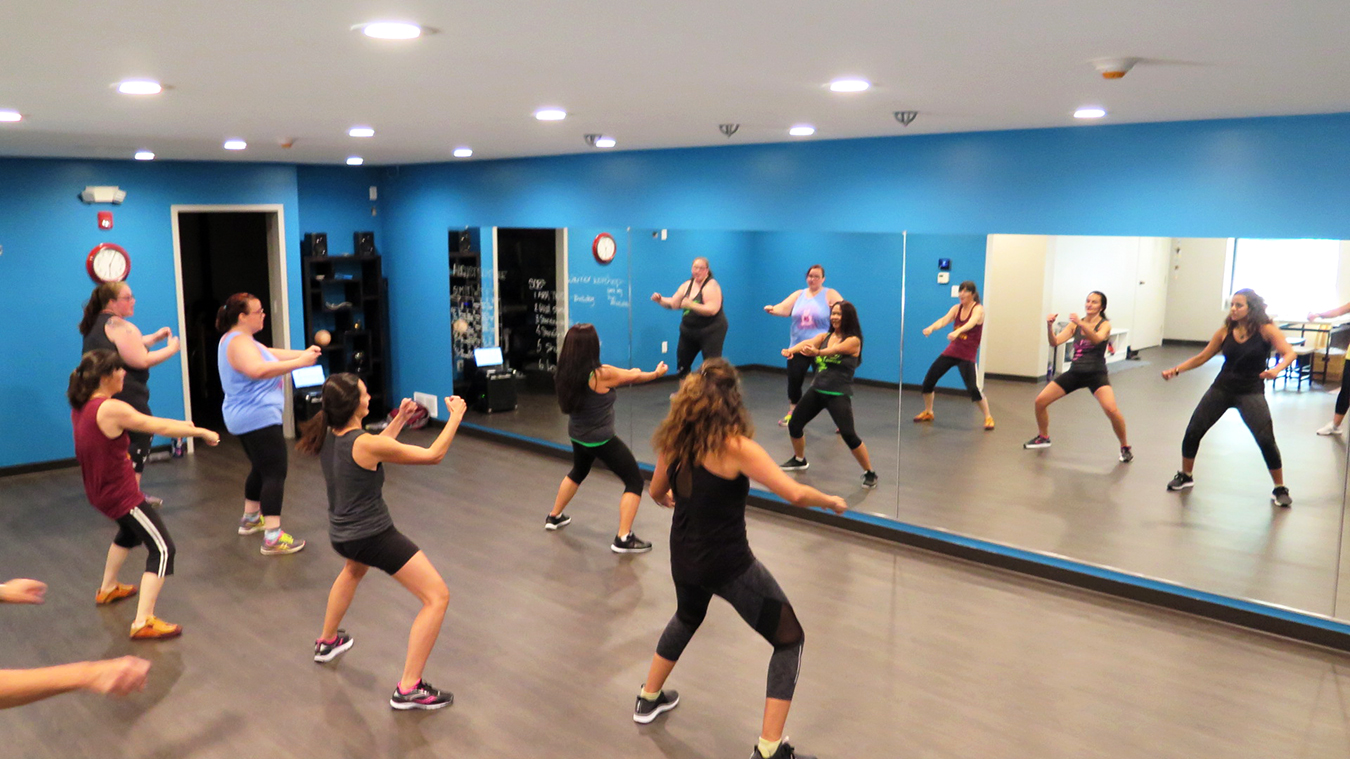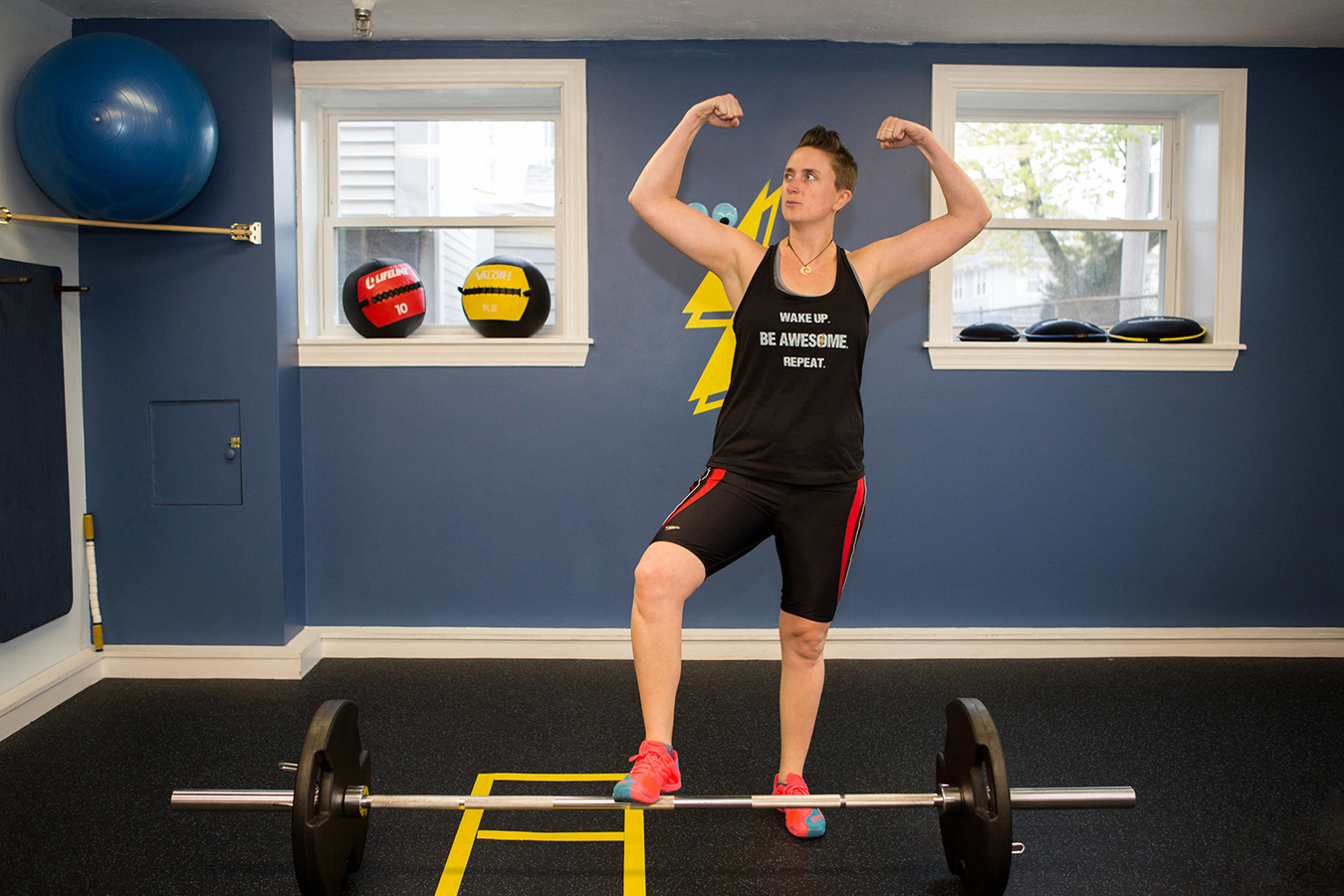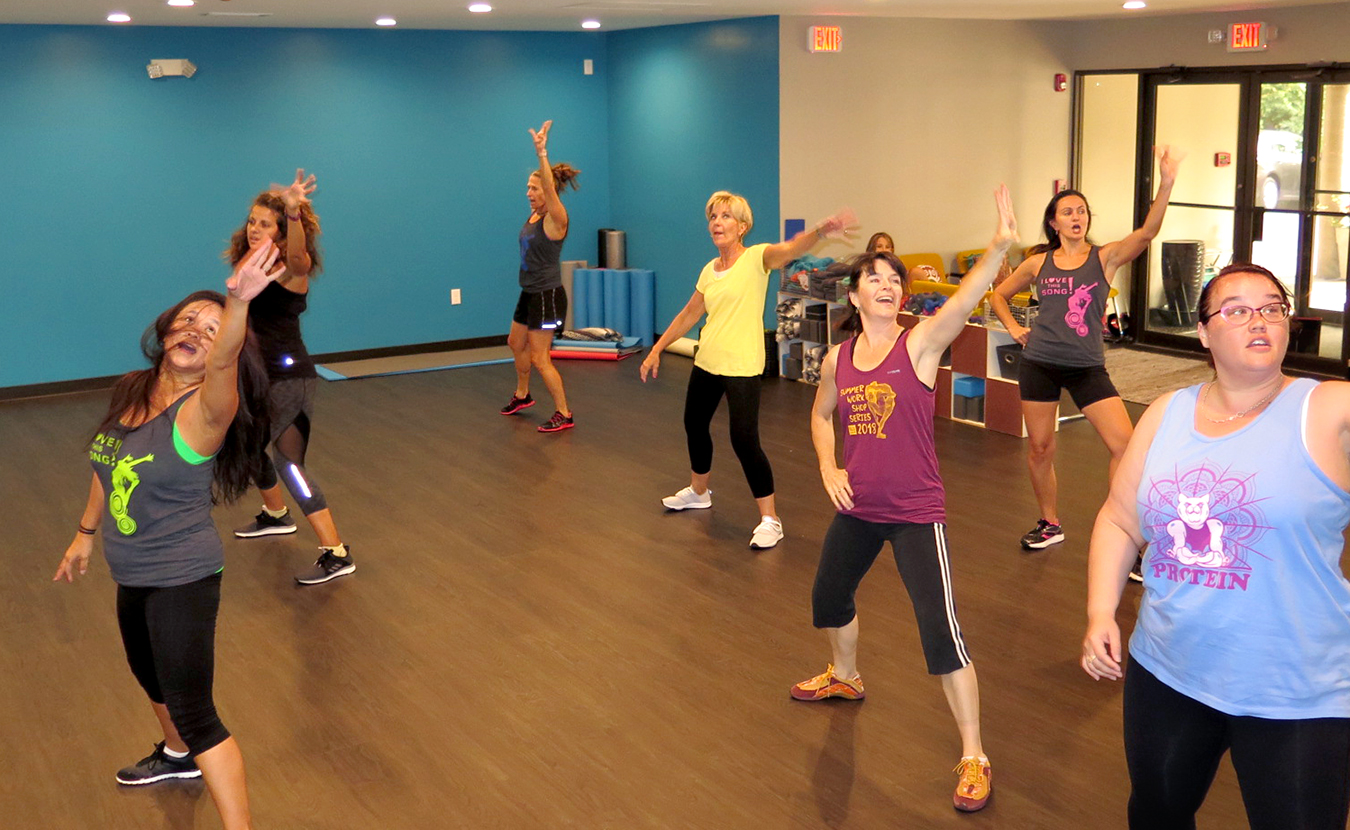My relationship with exercise is complicated.
I love exercise. When I go to the Y with my spouse and friends or attend my Bollywood fitness class, I leave feeling joyful and energized, even when it hurts. I love the way I feel after a good workout. My mind feels clearer. I feel stronger, more resilient, more self-assured. I feel like my favorite comic book hero, Wonder Woman, ready to repel bullets with my gauntlets and smash all barriers in my way.

Katy Kopp Miller says that weight-loss ads convince us we have more control over out bodies than we actually do. | Courtesy photo
And yet, I hate exercise. More specifically, I hate all the negativity tied up in diet and exercise culture. I hate all the language about torching calories, shredding inches, and losing pounds. I hate that talking about exercise is almost tantamount to admitting that I hate my body. What I hate most of all is that, even after resolving to be more accepting of my body, I still have moments when my self-criticism rears its ugly head and I see myself how diet culture would see me — fat, flawed, and worthless. Then my strength and confidence crumble.
This back and forth has me wondering, can I have fitness goals and still be body positive?
Exercise and body negativity
After consulting with Dr. Katy Kopp Miller and Jan Taylor Schultz — both specialists in treating eating disorders and understanding people’s emotional relationships with food and exercise — I discovered that exercise isn’t necessarily bad; it just hangs out with the wrong crowd.

Jan Taylor Schultz says only 4 percent of people can achieve the thin ideal pictured in weight-loss ads through normal healthy eating and regular moderate exercise. | Courtesy photo
Thanks to the fitness and weight-loss industries, exercise is tangled up in anti body-positive propaganda. Ads encourage us to torch calories, shred inches, and lose pounds while images of impossibly thin, sculpted bodies “convince us that we have more control over our body shape and size than we actually do,” says Miller. “It tells us that we can achieve that body if we do x, y, and z, when in reality that body is achieved through either airbrushing or genetics.”
In truth, only 4 percent of people can achieve the thin ideal pictured in these ads through normal healthy eating and regular moderate exercise, according to Schultz. The weight-loss industry, as well as our culture in general, preaches that fat bodies are worth less than thin bodies, and when the remaining 96 percent of us don’t measure up to the thin ideal, we are left with a sense of body dissatisfaction.
An overriding diet mentality grows out of this sense of body dissatisfaction. According to Miller, “The diet mentality defines people on their body shape and size. We start to see our bodies as things to be controlled and changed into something that is [culturally] acceptable.” Exercise then takes on a moral connotation. How many times have you heard someone say, “Oh, you went to the gym, you’re so good,” or “I was bad today and skipped my aerobics class.”
Diet culture has also warped the way we look at exercise. “Our idea of fitness is skewed. A lot of people just don’t have an idea of what normal healthy exercise is,” says Schultz. “They are generally exercising to sculpt their bodies, to stay thin, to look a certain way.”

Pacenza says finding a type of movement that you enjoy can be the key to your fitness goals. | Limestone Post
Can fitness be body positive?
Breaking away from this weight-loss model of exercise is not easy, even for those fitness instructors who recognize its detrimental effects. Darrelynn Valdez has been a fitness instructor for over 25 years. Early on in her career, phrases like “let’s burn those calories” or “earn that ice cream” were as much a part of the typical exercise course as spandex pants and ’90s pop music.

Fitness instructor Darrelynn Valdez emphasizes enjoyment over weight loss in her classes. | Courtesy photo
“I’ve been doing fitness for so long that I’ve heard and, unfortunately, used all the typical catchphrases,” says Valdez. “It’s something I’ve grown up within the industry, but now I try to avoid that kind of talk in the classroom.” In her current classes, Valdez works to create a more accepting exercise space that emphasizes enjoyment over weight loss.
But it’s not easy freeing exercise from the negative associations of diet culture.
Luckily, there are organizations like the Body Positive Fitness Alliance (BPFA) to help instructors and organizations do just that. According to Laura Vineyard — BPFA regional director for New York and Massachusetts and former member and coach of Bloomington’s Bleeding Heartland Rollergirls (on which I used to play) — “the BPFA is an educational organization that trains fitness and wellness professionals on how to offer more inclusive and accessible programming for their clients.”
One of the BPFA’s major tenets is that “all people are worthy of health, happiness, and access to fitness NOW.” This means “embracing movement for the joy and quality of life that it brings to a person,” says Vineyard. How you choose to experience movement or exercise is not important. What is important is that the fitness activity adds joy and value to your life. The BPFA works with fitness professionals to “open up their definition of ‘fitness’” in order to “invite more people to participate in a constructive way.”
In her work, Vineyard says there are two simple steps that instructors can take to make their classes and organizations more body positive. First, encourage moderation. While Vineyard admits that moderation is “unsexy as a selling point,” encouraging lofty goals like working out five days a week usually results in injury or burn out. She says it’s best to encourage clients to “choose a goal that they think they can meet 80 percent of the time in the life they live now. This helps start the ball of success and self-confidence rolling.”

Laura Vineyard says fitness instructors should encourage moderation to avoid injury or burnout. | Photo by Ashley Tilton
Second, “Don’t assume participants have an aesthetic goal unless they tell you directly,” she says. “Clients have the right to have whatever goals they want, but assuming what they need based on how they look can lead to damaging situations.”
Constructing our own body-positive fitness
In talking to amazingly smart and knowledgeable people about body positivity and fitness, one thing became very clear to me. Diet culture will not change quickly, so in the interim, those of us who have complicated relationships with exercise need to construct our own definition of body-positive fitness.
Here are three simple steps we can take to start stripping away the body negativity from fitness.
- Separate calories and food from your concept of fitness. According to Miller, “Exercise really has nothing to do with food except that you need food as fuel to run the body.” However, many of us see a kind of transactional relationship between food and exercise. We see exercise as penance for eating the wrong thing or as a way to gain permission to eat. This kind of talk triggers a lot of body dissatisfaction. Vineyard agrees: “I believe that body positivity means acknowledging that food has a role in our physical, emotional, and mental health and that wrapping it up with shame-filled baggage sabotages our overall health.”
- Don’t tie the wrong result to your fitness. When finding your motivation, stay away from those motivators that trigger self-criticism. Schultz suggests that instead of working out to stay thin or sculpt your body, focus on exercising for heart health, cardiovascular fitness, or increasing your stamina. In her class, Valdez encourages her students to focus just on the joy of movement and the clarity of mind that tends to come from exercising.
- Enjoy your mode of fitness. This is most important, and I heard it from every one of my sources. Our culture tends to believe that exercise has to be hardcore, strenuous. Some people may like that kind of exercise, but for others, exercising for long periods of time is not fun. Instead, find a form of movement you enjoy. Maybe it is going to an aerobics class or doing shorter spurts of high-intensity interval training, maybe it’s hiking, kayaking, swimming, or long walks while playing Pokémon Go. Whatever movement brings you joy, it counts as exercise and can be the key to achieving the fitness goals that are right for you.
By embracing these three ideals, we can have a less complicated and more enjoyable relationship with exercise. We can learn to honor our bodies for the great things they do.


